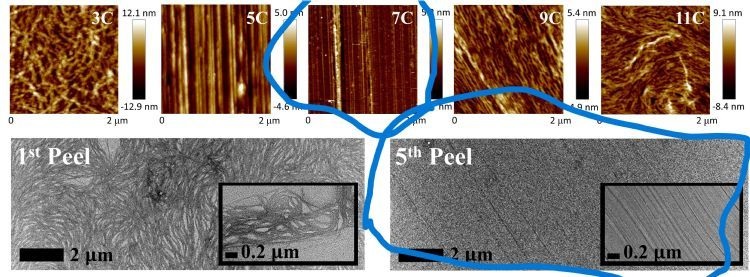The semiconductor industry, traditionally operating at the nanometer scale, is now pushing the boundary toward the even tinier "angstrom" scale (one-tenth of a nanometer) with an innovative team at Taiwan's National Cheng Kung University (NCKU) having crafted self-assembled equipment to achieve this unprecedented precision.
Their breakthrough method allows for the automatic and orderly alignment of minuscule semiconductor molecules within nanometer grooves.
A breakthrough of bottleneck
Assistant Professor Hsu Bang-Yu from NCKU's Department of Materials Science and Engineering explained that current semiconductor processes rely on growing crystals on small substrates using high-vacuum epitaxy equipment. They precisely control the growth of crystals and enhance accuracy through etching.
This method requires expensive equipment to create a clean and simple reaction environment, as it is challenging to grow tiny molecules exactly where needed.
The industry has achieved line width precision smaller than 3nm (one billionth of a meter), but advancing towards the angstrom scale (10A equal 1nm) is still an ongoing effort.
Because of budget constraints, the lab often uses liquid-phase reactions to synthesize semiconductor nanostructures and thin films, which are more complex and difficult to control than epitaxy techniques. This results in lower film cleanliness.
The team hopes further collaboration with industry partners could overcome these limitations.
Hsu noted that while current technology can statistically manage the random behavior of large numbers of molecules, it cannot yet control small molecules with angstrom precision under conventional processing conditions involving complex liquid-phase and fast gas-phase environments.
Their research breakthrough lies in overcoming technical bottlenecks to achieve large-scale quantifiable control of ordered liquid-phase molecule epitaxy at the angstrom level.
By leveraging the angstrom-scale electrical properties between molecules, they transformed uncontrolled two-dimensional aggregates and three-dimensional threads into quasi-three-dimensional controlled states. This drives molecules to align neatly in nanometer grooves, with areas reaching hundreds of micrometers.
This ordered alignment achieves extremely high molecular and morphological controllability with 1.25A precision over large areas. Using novel parameters and molecular stacking models to manipulate dynamic degrees of freedom, they quantitatively controlled complex intermolecular interactions, advancing material manipulation precision to the angstrom scale.
A resourceful and economical research
Hsu highlighted that many advanced instruments, costing millions of dollars, are required in their research. However, with support from NCKU's College of Engineering and the Department of Materials Science, students have assembled the equipment themselves with a much smaller budget.
The lab is filled with self-assembled equipment, such as a system combining cryogenics, micro-Raman scattering, and visible light absorption, which is not commercially available and would cost millions if it were. The team managed to assemble it for NT$2 million. Additionally, they constructed a maskless laser lithography system needed for advanced processes for NT$200,000, compared to the market price of NT$6 million to NT$10 million.

NCKU angstrom-scale production project
Photo: NCKU


